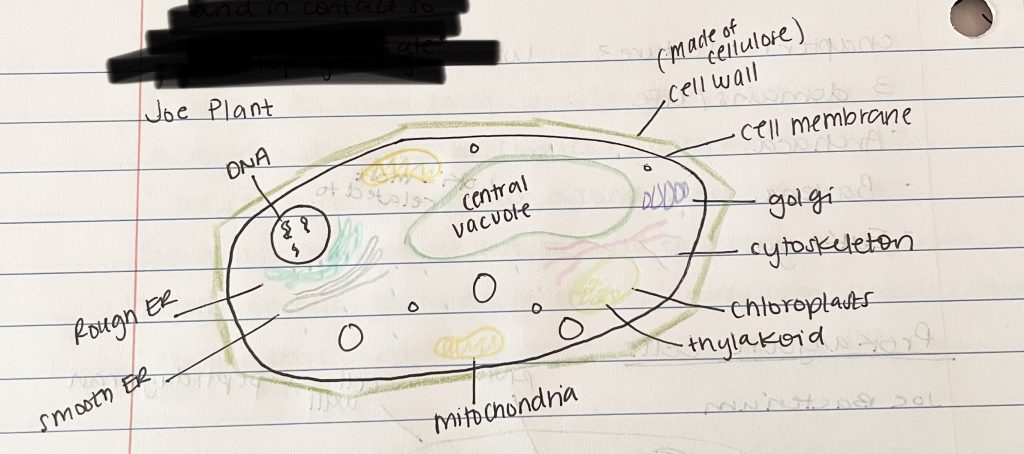


Kristin May
Bio 293
Scientific Literacy Essay
4/22/23
Background
This semester we are exploring if dormant cancer cells may “reawaken” due to a change
in a key protein. Based on what we’re researching in this essay (cancer, collagen, and the
extracellular matrix) then I’m assuming the key protein is collagen or a version of collagen.
Collagen is the most abundant protein in the human body, coming in at a whopping 30% of all
the protein in our bodies, and it’s used to make connective tissue which means it’s really
important for all our bones, tissue, cartilage, skin, muscles and tendons (Cleavland Medical
Professionals, 2022). It helps new cells grow as well which will probably be important to how it
relates to cancer, because cancer is caused by cells dividing uncontrollably and spreading to
surrounding tissue (National Cancer Institute, 2021). The ways you can damage collagen
includes smoking and exposure to UV rays, which are also impactful with things like lung cancer
and skin cancer respectively. So that also makes another connection between collagen and
cancer cells.
Meanwhile the extracellular matrix is a large network of proteins (of which collagen is
also the most abundant) and other molecules that support and give structure to cells and
connective tissue in our bodies. It also helps cells attach to nearby cells and is important to cell
growth and cell movement. If there are changes to the extracellular matrix then it can lead to the
development of cancer because it affects how they grow and how they spread to the tissues
mentioned before (National Cancer Institute, 2023). The extracellular matrix includes the
interstitial matrix and the basement membrane, the interstitial matrix acts like a buffer against
the stress put on the matrix, and the basement membrane are like sheets that give cell and
tissue support and are part of complex signaling (Wikipedia). All of the types of connective
tissue have an extracellular matrix, for instance collagen fiber and bone mineral make up the
extracellular matrix for bone tissue, collagen making up 90% of the protein content. (Wikipedia).
The extracellular matrix is different depending on what its contents are, it can have
different stiffness and elasticity which affects durotaxis (which is a type of cell migration where
cells are guided up a rigidity gradient). It can also have varying effects on gene expression and
differentiation depending on the properties of the matrix (wikipedia). Stiffness and elasticity are
primarily dependent on collagen and elastin concentration which is yet another way collagen is
important to the extracellular matrix, which has a direct effect on the development of cancer, so
it’s easy to understand why there needs to be background research done in order to dive deeper
into our main research topic about dormant cancer cells! Some interesting things I learned
about the clinical application of the extracellular matrix is that fetuses use it to grow and regrow
tissue and the matrix helps to heal any injuries they get in the womb. Also to my surprise I saw
that they can use the extracellular matrix from pig bladders to heal things like ulcers in our
stomachs (Wikipedia)!
There are different types of cancer, carcinoma are the most common types. For this
paper we’re discussing squamous cell carcinoma which is, “a cancer that forms in squamous
cells, which are epithelial cells that lie just beneath the outer surface of the skin. Squamous cells
also line many other organs, including the stomach, intestines, lungs, bladder, and kidneys.
Squamous cells look flat, like fish scales, when viewed under a microscope. Squamous cell
carcinomas are sometimes called epidermoid carcinomas (National Cancer Institute 2021).”
We’re also discussing collagen III, which is a protein in the extracellular matrix that is
used as a pre-procollagen (which seems to be a more broken down version of collagen I). It’s in
all our hollow organs, so things like our large blood vessels or uterus if you’re a woman. It’s also
used in blood clotting and part of the signaling process for healing our wounds. (Kuivaniemi H,
Tromp G. 2019).
Getting back to the topic of cancer, collagen III appears in the extracellular matrix of
dormant cancer cells, they have an abundance of it. There has been research to indicate that
when cancer cells switch from dormant to reactivated it’s linked to changes in the amount of and
structure of collagen III (Di Martino JS et al, 2022). This naturally generates the idea that there
may be a way to reduce the reactivation of cancer cells by manipulating those aspects of
collagen III in the extracellular matrix of dormant cancer cells. I believe the article we’re going to
read is going to discuss this idea.
Data Analysis
The major findings of this article showed that overall collagen III definitely impacts
proliferation, and has something to do with tumor cells being dormant. This is evident from the
abundance of it found in dormant cells, and through their experiments that show the effect of
collagen III in reducing tumor growth. To start with one of the things the findings show is the
difference in the alignment of the collagen around the cells. There’s a big difference between the
straight up and down linear form in the ECM of the proliferative cells, T-HEp3 and the scraggly
wild looking mesh like collagen fibers in the dormant cells, D-HEp3. There’s clear indication that
their matrixes are very different, especially when you look at the graphs where they present
normalized angle orientation and normalized distribution, you can see a place where the
D-HEp3 cells are all basically along the same curve while the T-HEp3 cells come to a sharp
peak that indicates these ECM’s are not structurally the same at all. These same changes are
shown in single cells vs. metastases, there’s still that linear structure in the metastasis cells
matrix versus the meshed network in the single cells (Di Martino et al., 2022).
During another part of this study they analyzed data from a CDK2 sensor to examine the
phases of the cell cycle that were taking place to distinguish between dormant and proliferating
cells by seeing which ones were in G0/G1 (having a bright green indication) meaning they’re not
actively going through the cycle yet and are therefore dormant versus ones going through the
G2 and S phase (having a darker center and more faded green look). With that information
when they compared a single tumor cell thats bright green indicating the CDK2 sensor picked
up something going through the G1/G0 phase, but then when you look at the metastases
portions, especially in the merged images that also have the HTB sensor input, you see that
there’s a lot more variation and cells that are clearly cycling/proliferating. So there seems to be
more cells going through mitosis where the relapse is than where the single cell is (Di Martino et
al., 2022). There also seems to still be the correlation of the mesh ECM with the single cells,
and the linear ECM with the metastases.
So at this point we understand that there’s definitely a difference in the collagen fibers in
the extracellular matrix, but what type of collagen it is that’s impacting the cells differently is still
a question. So in their findings they show that when they isolated the proteins they found that
there was an abundance of collagen in the dormant cells, and with imaging in which they
stained collagen III specifically, they found that for d-HEp3 there was an abundance collagen III
compared to that of the proliferating cells which had little to no collagen III. In the same respect
they found that for solitaire cells there was a great deal more collagen three than for
micrometastasis. So they then began to experiment more with collagen III with mice, introducing
collagen III to them in a variety of ways. One of which was using the proliferative T-HEp3 cells
and testing the effects of collagen III in combination with them and what they found was that the
tumors that grew were significantly smaller than those that grew with any other collagen added
to it (Di Martino et al., 2022).
At this point it’s clear that collagen III is able to impact the growth of tumors so then they
had to determine if it was actually able to take proliferating cells and make them dormant. What
they did was compare T-HEp3 that they grew with collagen I as the control and collagen III as
their variable and looked to see if cell cycling was reduced, so like what was mentioned before,
comparing how many are in G0/G1 phase and how many are in G2/S phase. Before comparing
one of the things they looked at was a blot test for H3 because it gets phosphorylated in dividing
cells and what they saw there was that there is little to no H3 in the T-HEp3 that was grown with
collagen III and there was a large amount in the control group with collagen I, indicating that
there was little to no dividing happening in the collagen III group. When you look at the imaging
they tracked, and the ones with collagen III clearly have much less cells going through the S or
G2 phases as there’s mostly only solid bright green cells indicated and few others. Meanwhile
the collagen I group has a variety of shades of green and shows a number of cells going
through the cycle(Di Martino et al., 2022). This would reasonably indicate, as well as their graph
showing the slower rate of cycling in the collagen III group over time, that the collagen III is able
to successfully decrease the number of cells going through S/G2 phase.
From understanding that there’s an abundance of collagen III in the extracellular matrix
of dormant cells, to this last comparison indicating that collagen III can slow down the rate of
cells going through the cell cycle, to the reduced tumor growth in the mice, it’s fair to say that
there’s ground to stand on in continuing research to hopefully find a way to manipulate cancer
growth via collagen III interference
End of Term: Reflection
One of the most interesting sections of this course for me was by far the cell signaling, and learning about how those chain reactions work with G-Protein coupled receptors and the way that makes medicines like anti-depressants work, as well as other medications. This was probably one of the first sections I was really able to follow in depth and gain a genuine understanding of how things worked. Not to mention how this impacts things like our glucose levels in our bodies and how that information is important to understand when addressing medical issues and the medicines needed to rectify those scenarios, or even how that just affects your body when you’re exercising. I hope to be a nurse and eventually a PA later in my career and I think having an in depth understanding of how things like this take place is so beneficial to working in the medical field. Going beyond just knowing that anti-depressants make you feel less sad and actually understanding it’s about feeling satisfied, it’s about not being able to produce serotonin and needed to produce an overflow to make up for it. Things like that make me feel like I’ll be a much more knowledgeable medical provider one day.